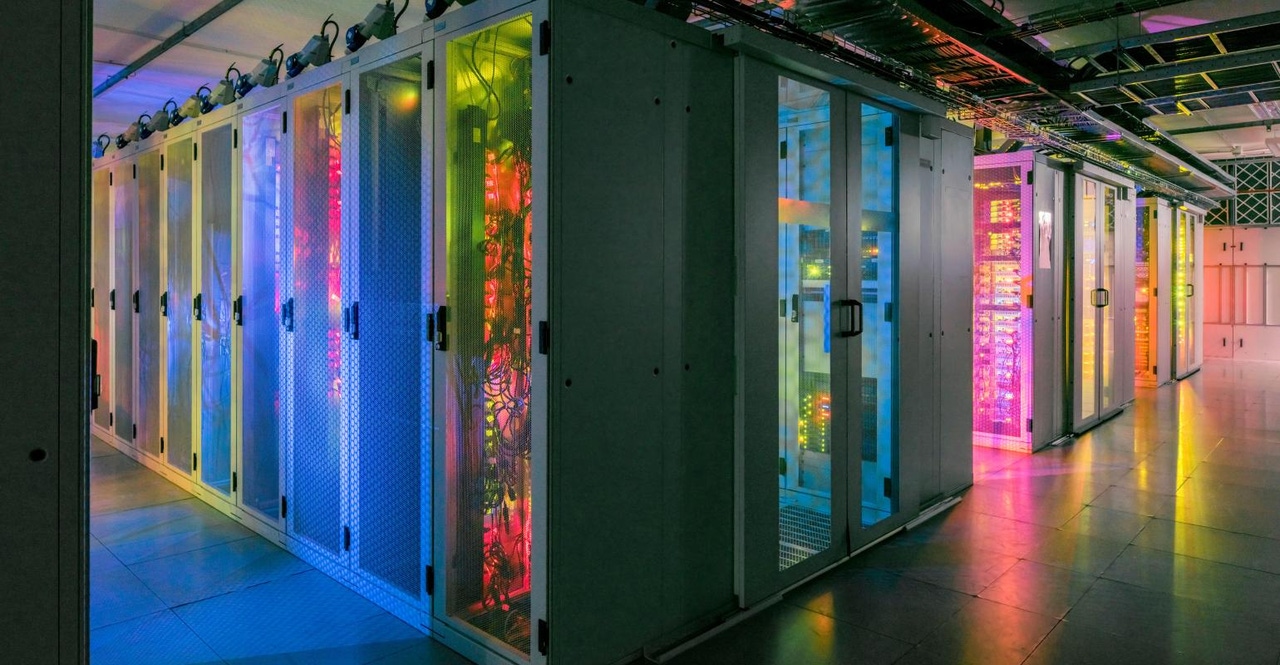Data Center Pro Considers the Future of Hybrid Data CentersData Center Pro Considers the Future of Hybrid Data Centers
Hector Diaz shares his answers to AFCOM's "Five Data Points" interview series.
January 24, 2023

Editor’s Note: Data center member organization AFCOM interviewed Hector Diaz, the Director for Data Center Strategy & Architecture at Johnson & Johnson, on the data center industry and its impact on the world. Hector is a member of AFCOM’s Data Center Institute (DCI) and has more than 15 years of experience as a senior business leader designing, deploying, and operating mission-critical data center infrastructure.

Hector Diaz, director, Data Center Strategy & Architecture at Johnson & Johnson
AFCOM: This past year, what has been the greatest challenge you’ve had to face within the data center industry? How have you overcome it?
Hector Diaz: First, I’d like to state that I’m speaking only as a member of the DCI Board. My responses are based on my general work experience and connections with my peers throughout the industry. So anything I say here isn’t on behalf of my employer [Johnson & Johnson].
Finding the right balance of what exactly a hybrid data center should be—the right mix of on-prem vs. colo—has been the biggest challenge I’ve consistently seen by talking to many of my peers. However, there also seems to be a lot of people struggling with justifying “all-in” cloud-based initiatives. Some companies have made statements like, “We’re moving everything to the cloud.” And, I mean, if they really push the envelope like that, it’s not really a hybrid-based solution anymore, right?
Another issue or complaint I hear is that migrating everything to the cloud “turns out to be more expensive than we thought.” I believe that, in many cases, the culprit for these runaway costs is the lack of cloud governance. I’d like to offer an analogy about governance. Imagine you’re throwing a party, and you’re pondering whether all your guests want alcohol at your party. You can either have an open bar, which means you’ll have no idea what you’ll spend; have a cash bar, where people can pay for their own drinks; or offer everyone two drink coupons, and limit my expense.
What I’ve seen in the industry is that a lot of people dive into the cloud with an “open bar” policy. Of course, the cloud providers will tell you they have tools that track their spending. But I’ve never had anyone tell me, “I worked with this vendor, and they actually did tell me when I was about to blow my budget.” So I think people need to be a lot more careful and conscientious with their cloud spending overall.
AFCOM: How do your data centers interact or give back to their local environments or communities? How do you hope to give back in the future?
Diaz: Johnson & Johnson has a credo, a set of behaviors we want to live by. Number one is looking after our patients, doctors, and nurses that we serve. We take care of our employees and shareholders, but one of the largest entries in our credo is that we also take care of our communities.
We tend to reach out to local communities and figure out exactly what they need, whether it’s food drives, or Habitat for Humanity, or what-have-you. We encourage our employees to participate in those efforts, and we give them time to do so—they don’t need to take vacation or anything.
AFCOM: If you could build a data center anywhere in the world, where would it be and why?
Diaz: I don’t think there’s a single answer that’d be universal. The main driver whenever you think about building a new data center should be, “What exactly do I need a data center for?” And you better have a great answer for that. The answer might be because I’m running a large facility, and I’m running all the robotics and machine learning, etc., and while I might get cheaper cooling in the Arctic Circle, I really need this data center here. Or, even though I might be able to build a very cheap data center in Lithuania, for example, it’ll take too long for me to get the data I need and send data back.
For now, the truth is that there’s so many different decisions that must be considered when you build a new data center. For example, after deciding what I need and where I need it, I need to consider potential geo-fencing issues.
I have a classic case of having to deal with this from my time at another Fortune 100 company. We were a large company, and we had the economics of scale to build large data centers. However, it’d be tough for me to build a data center in Northern Europe, because the French wouldn’t want their data in Italy, and the Italians wouldn’t want their data in Estonia, etc. In short, it’s really hard to have just one simple reason.
AFCOM: What recent data center trends have made you the most excited or enthusiastic?
Diaz: At Data Center World earlier [in 2022], I heard that the average power consumed by an average rack had floated somewhere around 5-7kW and had done so daily for roughly the past twelve years.
There’s a couple of interesting intersecting issues here. The first one is, for those same twelve years, we’ve had industry pundits mostly saying, “The sky is falling. You need to plan to support 8kW racks, 12kW racks, 20kW racks, 50kW racks.” And the reality is that, while I may have had a single rack that was pulling 18-20kW, it was surrounded by racks that were pulling 2. [Laughs.] So, at the end of the day, if you pool the average of all the racks, the average power has been around 3-5kW total.
Now, I’m finally seeing data that shows that we might be able to fully move up that average. We’re starting to see a move towards higher densities, as well as individual racks that are well past 18-20kW. What that all means is that I think there’s now a case for companies to look at the potential of water cooling or direct cooling to the processor, which means we’ll need to plumb our data centers and have water running under our raised floor. Or, if you don’t have a raised floor, what’s the appetite for having pressurized water somewhere else? It’s going to inspire a lot of changes in data center construction.
Basically, I’m starting to see more of my peers scratching their head and saying, ominously, “It’s all going to change, isn’t it?
AFCOM: What do you personally hope to accomplish in the next decade? What do you hope the data center industry as a whole is able to accomplish in the next decade?
Diaz: I’m at a point in my career where my legacy is really in passing along a lot of what I’ve learned to up-and-coming who I’m training to replace me over time. So I hope I can continue to give opportunities for these people to learn a lot from me and gain a lot of my experience.
It’s interesting in a world of highly specialized people who’ve become experts, and here I define an expert as someone “who knows more and more about less and less.” I just really encourage people to take a step back and look at more overarching things, look at the bigger picture. For example, when talking earlier about wanting to build a data center anywhere, if I only studied sustainability and energy efficiency, the only suggestion I’d have on where to build would be the Arctic Circle. It’d be perfect for that, right? Or if I’m not considered about not using up too much water, I wouldn’t build in the Southwest US.
I really want people to broaden their view and consider all of the things. There’s a lot of value you can bring to the table by not trying to micromanage something as large as the data center.
About the Author
You May Also Like









